

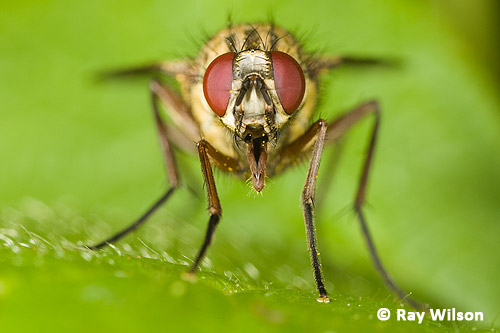
There are approximately 180 species of Muscidae in Britain, the majority of which feed on surface liquids through a sucker-like proboscis, but there are also a few species that are actively predatory and a couple feed on blood by biting their victims.
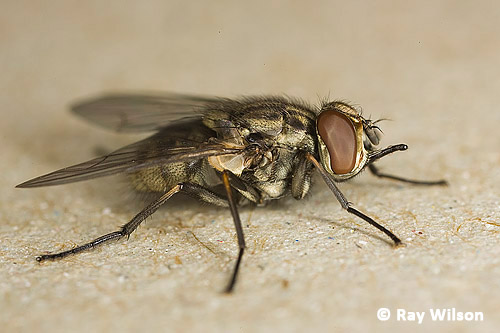
One such haematophagous species is Stomoxys calcitrans, an economically important pest of livestock. It congregates in areas where livestock are kept in confined spaces, such as stables or pasture fields, where its habit of delivering painful bites to take a bloodmeal causes stress to victim. In areas where the density of flies is reasonably high, the stress caused by the fly's habit of delivering painful bites when it takes a bloodmeal inhibits the livestock's growth rate and, in the case of dairy cattle, significantly reduces their milk yield.

As well as the detrimental affects from the physical pain of the bites, Stable Flies are also capable of mechanically transmitting numerous diseases, including Anthrax (Bacillus anthracis), trypanasomiasis (Trypanosoma evansi, T. equinum, T. brucei & T. vivax) and mycotic dermatitis (Dermatophilus congolensis).
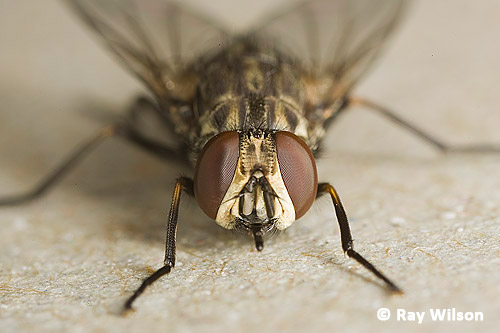
It is also a developmental vector of the spirurid nematode Habronema majus which causes cutaneous habronemiasis, or "Summer sores", in horses.
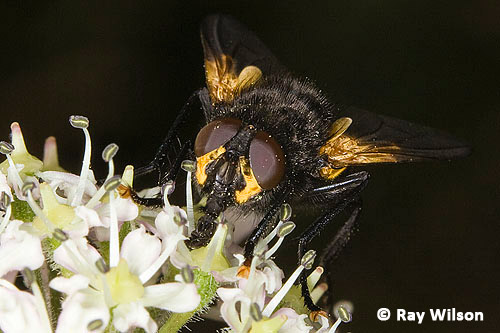
With its metalic gold face and wing bases, Mesembrina meridionalis (above) is a very distinctive species. It is also one of Britain's largest Muscids.
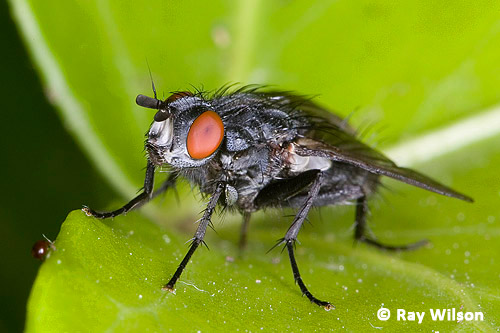
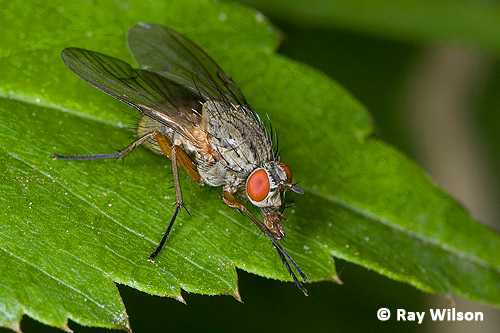
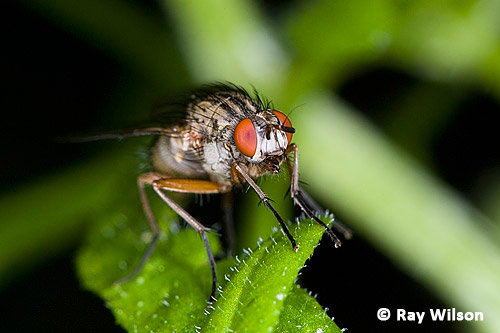
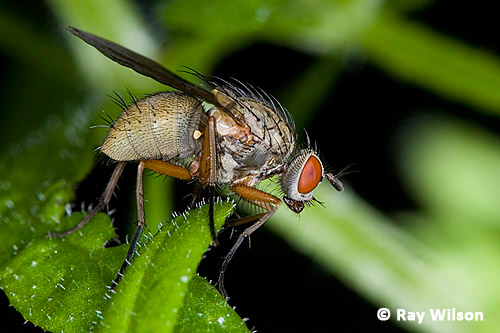
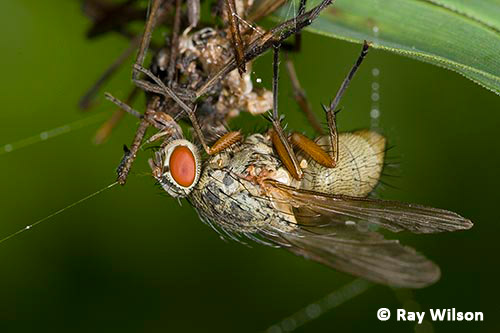
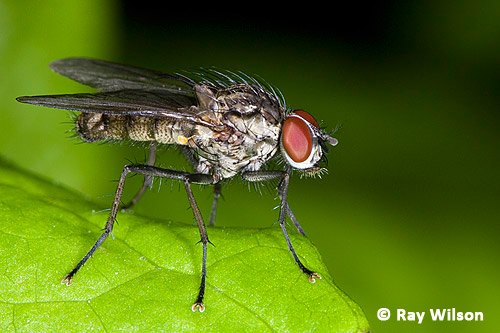
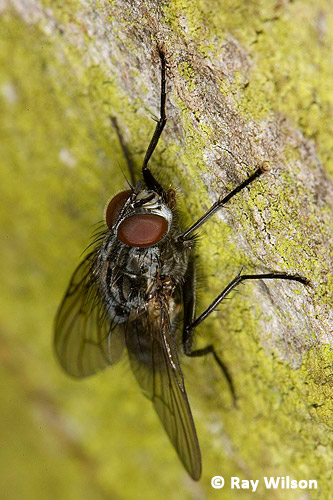
Wirral, England - June 2007 |
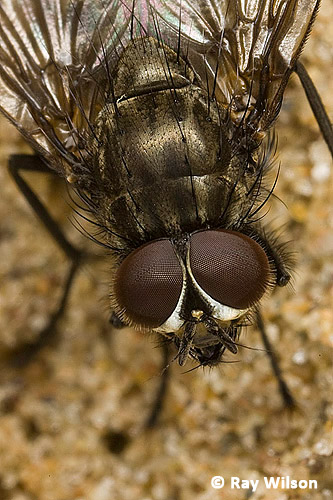
Anglesey, Wales - March 2009 |
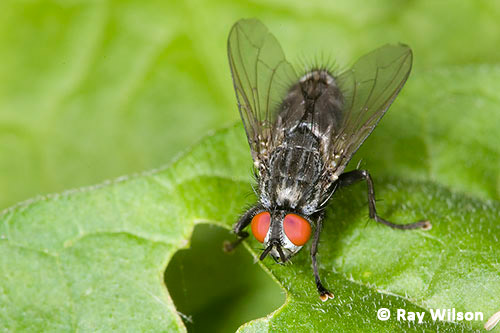
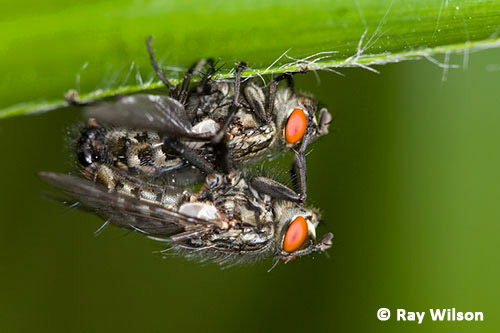
Ray Wilson owns the copyright of all images on this site.
They may not be used or copied in any form without prior written permission.
raywilsonphotography@googlemail.com